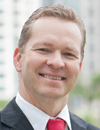Pacemaker Data Betrays Host in Fraud Case
/GUEST BLOGGER
Jeremy Clopton, CFE, CPA, ACDA, CIDA
Director, Big Data & Analytics, Digital Forensics
BKD, LLP | Forensics & Valuation Services
As the world of unique ways to investigate fraud expands, investigators in Middletown, Ohio, have given us the latest in ways of using data to solve a case. Not data from an accounting system, building access records or an Amazon Echo (see last month’s post) — this time it was data from a pacemaker. According to the article, a man was “charged for arson and fraud after law enforcement used data gleaned from his pacemaker to uncover an alleged plot to cheat his insurance company.” The man in question was attempting to collect more than $400,000 in damages caused by a fire at his home. However, the story he told of the exertion he underwent to pack suitcases and throw them out a window didn’t quite line up with the story his heart told. Police obtained a search warrant and went after the electronic records of his pacemaker. They quickly discovered that the heart doesn’t, in fact, lie. When I first read this story, I was initially shocked a pacemaker could be used this way. The more I thought about it, however, I quickly realized that it is an obvious application of analytics.
Using analytics to detect fraud often involves the application of pattern recognition technology. That can mean looking for specific patterns indicative of a fraud, looking for patterns contrary to your expectations or finding patterns where you wouldn’t expect. In this particular case, it was the absence of a pattern where one was expected. So, how does one go about applying analytics to a case like this? The same way you apply analytics in any situation — following a predictable framework.
Strategic question: Is Mr. Compton’s story plausible?
Objective: Identify indications of exertion of effort consistent with description of actions.
Data: Pacemaker electronic records.
Procedures: Trend analysis of heart rate, demand on pacemaker and heart rhythms before, during and subsequent to actions in story.
Analyze results: Patterns don’t show signs of increased exertion that would have been present based on story.
Manage results: Investigate other possible reasons for inconsistent pattern.
At its core, this is the same framework and application methodology for analyzing trends in financial or other data. What differentiates this from typical applications of analytics in investigations is the willingness to get data outside of traditional systems. As the Internet of Things grows and expands, the opportunities to go outside these traditional systems will also grow. More devices — wearables, virtual assistant devices, vehicles, etc. — will generate more data than ever before. Each of these will provide an opportunity to evaluate patterns in data compared to expectations.
The challenge is this — how will you begin to leverage these non-traditional data systems in your investigations?


